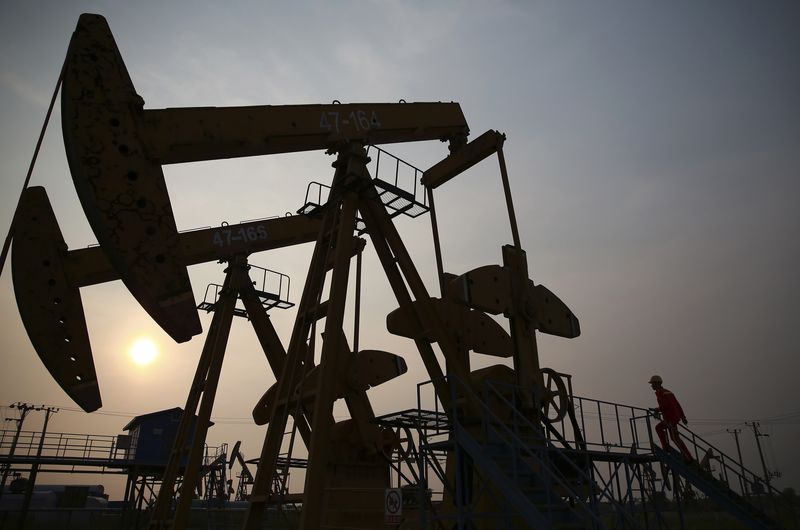Investing.com - Oil prices fell on Monday morning in Asia amid rising concerns about looming oversupply as the U.S. continues to increase drilling activity.
Crude Oil WTI Futures for May delivery were trading at $62.11 a barrel in Asia at 10:00pm ET (02:00GMT), down 0.48%. Brent crude futures for May delivery, traded in London, were also down 0.48% at $65.89 per barrel.
Global oil markets are facing the risk of returning into oversupply after being in a slight deficit for much of last year. Rising drilling activity in the U.S. points to further increases in output.
U.S. drillers added four oil rigs in the week to March 16, bringing the total count to 800, according to the weekly Baker Hughes drilling report on Friday.
The U.S. rig count is an early indicator of future output, and it is now much higher than a year ago when only 631 rigs were active. Energy companies have continued to boost spending since mid-2016 when crude prices began recovering from a two-year crash.
The high drilling activity has enabled the U.S. to produce 10.38 million barrels per day (bpd), up by more than 23% since mid-2016 and surpassing top exporter Saudi Arabia.
The U.S. is expected to overtake Russia as the top producer by late 2018, with output of more than 11 million bpd.
Meanwhile, the Organization of the Petroleum Exporting Countries (OPEC) continues to withhold production in an effort to prop up oil prices. OPEC has been cutting output by around 1.2 million bpd since January 2017. This has inadvertently allowed the U.S. to take more market share as it relentlessly ramps up production, consequently capping prices.
According to the International Energy Agency (IEA), non-OPEC supply, led by the U.S., will grow by 1.8 million bpd this year, while demand will only grow by about 1.5 million bpd.
Estimates by the Energy Information Administration (EIA) also show global supplies will rise above 100 million bpd for the first time in the second quarter of this year, while demand will only surpass that level in the third quarter, implying an oversupplied market.
